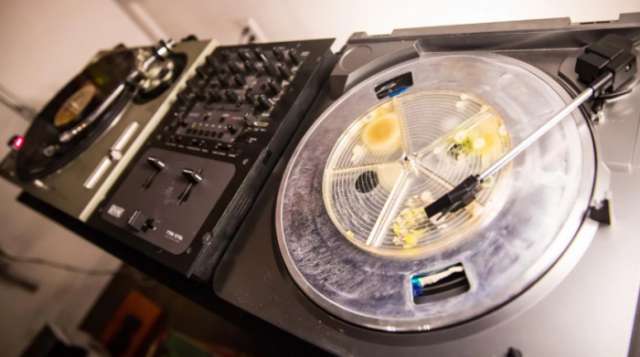Think of it as musical biohacking. The team crowdsources swabs from body parts — including mouths, feet, genitalia, belly buttons and armpits — then cultures the microorganisms on petri dish-like “records.” Then they use special algorithms to translate the bacteria into sounds. Different regions are assigned different instruments, and the density and distribution of the microorganisms on the plate creates different sound patterns.
The MIT Media Lab-based team behind BiotaBeats has used the sounds in different ways. On the team’s website, you can listen to beats created by different microbiomes. The hackers have worked with DJ Jazzy Jeff to create a custom-cultured set of beats for his hip-hop projects. And this month, they debuted a crowdsourced song, “Uni-Verse,” that features bacterial beats from hundreds of people from around the world.
It’s all an attempt to get the public more interested in bioengineering. And given the weirdly compelling quality of the music made by scalps, ears and elbows, it’s not hard to envision a world in which our bacteria produces music just by multiplying.
The original article was published in the Washington Post.
More about: #Microorganism #health
















































